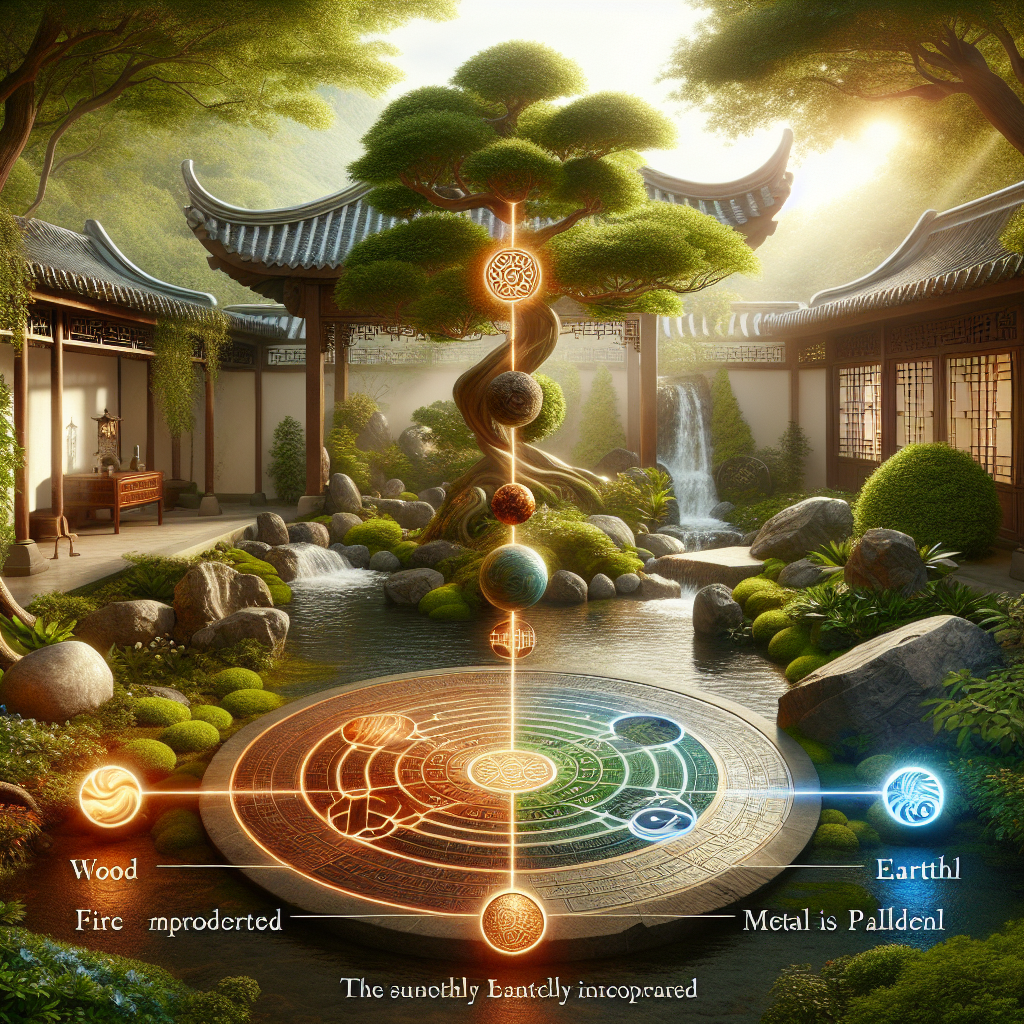Have you ever walked into a room and immediately felt either relaxed or tense without knowing why? Or perhaps you’ve noticed how your energy levels fluctuate depending on your surroundings? Just as our external environments affect our mood and wellbeing, the arrangement and flow of energy within our bodies can significantly impact our health. This is where Body Feng Shui comes in – an innovative approach that brings ancient wisdom into our modern quest for wellness.
Body Feng Shui adapts traditional Feng Shui principles, typically applied to our living spaces, to focus on the human body’s internal landscape. While conventional Feng Shui concerns itself with arranging furniture and décor to optimize energy flow, Body Feng Shui turns this attention inward, examining how we can better organize and balance the energies within ourselves.
At its core, Body Feng Shui recognizes that our bodies, like our homes, are vessels containing life energy or “qi” (pronounced “chee”). When this energy flows smoothly and remains balanced, we experience optimal health and vitality. When it becomes blocked or imbalanced, we may experience physical discomfort, emotional turbulence, or mental fog – signs that our internal energy flow balance needs attention.
Understanding Qi: The Life Force at Our Core
In Eastern medical traditions, qi is understood as the fundamental energy that animates all living things. It flows through specific pathways in our bodies called meridians, nourishing our organs, tissues, and mind. “Qi is responsible for maintaining the vitality of your body, mind, and spirit,” explains practitioners of traditional Chinese medicine. By understanding how qi operates, we gain deeper insights into our symptoms and can identify imbalances before they develop into more serious conditions.
When qi flows freely, we feel energetic, clear-headed, and emotionally balanced. However, various factors can disrupt this flow. Stress, poor diet, lack of movement, and even negative thought patterns can create blockages or depletions in our qi, leading to what’s known as “qi stagnation” – a condition that manifests as fatigue, mood swings, digestive issues, or chronic pain.
Body Feng Shui teaches us to recognize these signs of energy imbalance and offers practical methods to restore proper flow. As one practitioner describes it: “Qi stagnation is your body’s quiet call for help—a gentle request to soften, to open, to move, and to reconnect with yourself and the natural flow of life.”
Yin and Yang: Finding Balance in Opposites
Another fundamental concept in Body Feng Shui is the balance of yin and yang – complementary opposite forces that exist in all aspects of life. Yin represents qualities like coolness, receptivity, calm, and introspection, while yang embodies warmth, activity, stimulation, and outward expression. This balance between yin and yang is essential for optimal health.
Our bodies naturally contain both yin and yang elements, and health depends on maintaining an appropriate balance between them. For example, our rest cycles (yin) must balance with our active periods (yang). Our cooling systems must balance with our warming functions. Even our emotional lives require a balance between reflection and expression.
Many modern health issues stem from imbalances in these opposing forces. We may have excess yang from overwork, stimulation, and stress, without sufficient yin activities like rest, meditation, and quiet reflection. Or we might experience deficient yang, manifesting as lethargy, poor circulation, or lack of motivation.
Body Feng Shui offers practical approaches to restore this balance. Activities like tai chi and qigong specifically work with these energetic polarities, helping practitioners develop awareness of both yin and yang qualities and how to harmonize them within the body.
Body Alignment: The Physical Dimension of Energy Flow
Physical alignment plays a crucial role in Body Feng Shui. Just as traditional Feng Shui examines how furniture placement affects energy movement through a space, Body Feng Shui considers how our posture, movement patterns, and physical structure impact the flow of qi through our bodies.
Poor posture can compress organs, restrict breathing, and block energy pathways. Repetitive movement patterns might overwork certain areas while neglecting others. Even how we hold tension – clenching our jaw, hunching our shoulders, or gripping our abdomen – creates energetic imbalances that ripple throughout our systems.
Mindful movement practices form a key component of Body Feng Shui. Yoga, for instance, systematically opens energy channels through specific postures designed to address different meridians and organs. Tai chi focuses on fluid, continuous motion that balances opposing forces while strengthening the body’s core energy. Even simple practices like conscious walking or mindful stretching can dramatically improve energy circulation when done with awareness.
“Creating a balanced environment enables a stronger connection to your center and axis,” notes a Body Feng Shui expert. This principle applies both to our external spaces and our internal physical alignment. When we properly align our bodies, we create the conditions for qi to flow optimally, supporting overall health and resilience.
Environmental Influences on Internal Harmony
A fascinating aspect of Body Feng Shui is its recognition that our internal and external environments constantly interact and influence each other. Traditional Feng Shui teaches that our living spaces affect our energy, mood, and health. Body Feng Shui extends this understanding by exploring how these external factors specifically impact our internal energetic state. This approach aligns with Feng Shui wellness principles that consider both inner and outer harmony.
Cluttered, chaotic environments can create internal stress and qi stagnation, even when we’re not consciously aware of it. Spaces with poor air circulation may contribute to respiratory issues and reduced vitality. Harsh lighting can disrupt our natural rhythms, while certain colors and shapes subtly influence our nervous system and emotional state.
Simple environmental adjustments can significantly improve your Body Feng Shui:
- Decluttering your primary living spaces to allow energy to flow more freely
- Introducing plants to improve air quality and add vibrant life energy
- Ensuring adequate natural light, which synchronizes your body’s natural rhythms
- Creating dedicated spaces for both activity (yang) and rest (yin)
- Reducing noise pollution, which can create internal agitation and energy depletion
“When both your internal and external environments are in harmony, the potential for optimal health and happiness is significantly amplified,” explains a practitioner. This reciprocal relationship between our surroundings and our bodies offers multiple entry points for improving overall wellness.
A Holistic Approach to Wellness
Body Feng Shui stands out for its comprehensive, holistic approach to health. Rather than treating isolated symptoms or focusing solely on physical concerns, it addresses the complete person – body, mind, emotions, and spirit – as an interconnected energetic system.
Meditation forms a cornerstone of Body Feng Shui practice. By quieting the mind and turning attention inward, we can become more aware of subtle energy imbalances and blockages. Regular meditation has been shown to reduce stress hormones, lower inflammation, improve immune function, and enhance overall wellbeing – all outcomes that align with the goals of Body Feng Shui. This practice is one of many self-healing techniques derived from Eastern wisdom.
Dietary practices also play an important role. According to Body Feng Shui principles, food carries energetic qualities beyond just its nutritional content. Some foods are warming (yang), while others are cooling (yin). Some strengthen qi, while others might deplete it if consumed excessively. Learning to eat in harmony with your body’s specific needs and constitutional tendencies supports optimal energy flow. This concept is fundamental to applying traditional wisdom in modern life.
Breathwork serves as another powerful tool for energy regulation. Our breath directly influences our nervous system, which in turn affects every organ and function in the body. Conscious breathing practices can shift us from stress states to relaxation, clear stagnant energy, and revitalize areas of depletion.
“The philosophy of feng shui examines how to live in harmony with the natural world,” notes one source. This harmony extends to how we treat our bodies, the rhythms we establish in our daily lives, and the consciousness we bring to our health choices.
Practical Body Feng Shui for Modern Life
Integrating Body Feng Shui principles into your daily routine doesn’t require massive lifestyle changes. Even small, consistent practices can yield significant benefits over time:
Start your day with energy awareness: Before rushing into activity, take a few moments to scan your body, notice areas of tension or stagnation, and use gentle movement or breathing to address these spots.
Create mindful transitions: When moving between activities, take a brief pause to reset your energy. This might be as simple as three conscious breaths or a quick body shake to release tension.
Balance your elements: Body Feng Shui, like traditional Chinese medicine, recognizes five elements (wood, fire, earth, metal, and water) that must remain in balance. Notice if you tend toward excess or deficiency in certain elements, and incorporate balancing activities.
Practice environmental awareness: Regularly assess how different environments affect your energy levels and mood. Notice which spaces feel nourishing and which deplete you, then make adjustments accordingly.
Establish energy hygiene: Just as we shower to cleanse our physical bodies, consider adopting practices that cleanse your energy field – such as meditation, time in nature, or specific qigong exercises designed for this purpose.
The Future of Body Feng Shui in Modern Wellness
As more people seek holistic approaches to health, Body Feng Shui offers a profound yet practical framework for understanding the relationship between energy, environment, and wellbeing. Its principles complement modern wellness practices while adding the depth of ancient wisdom.
Today, innovative tools like EASTCHI AI are making this traditional knowledge more accessible than ever. By analyzing individual constitutional types through Five Element Theory and providing personalized recommendations, such technologies help bridge Eastern medical wisdom with contemporary lifestyles. EASTCHI AI specializes in delivering customized nutrition plans and lifestyle recommendations grounded in these same energetic principles that inform Body Feng Shui.
For health-conscious individuals interested in natural approaches to wellness, Body Feng Shui provides both immediate practical benefits and a lifetime journey of deepening awareness. It teaches us that health isn’t merely the absence of disease but the harmonious flow of life energy throughout our being.
The beauty of Body Feng Shui lies in its adaptability. Whether you’re dealing with chronic health challenges, seeking greater vitality, or simply wanting to optimize your wellbeing, its principles can be tailored to your unique situation. By bringing conscious attention to your internal energetic landscape and making thoughtful adjustments to support balance, you tap into the same wisdom that has guided Eastern healing traditions for thousands of years.
As we continue to face mounting stress and disconnection in modern life, the ancient practice of Body Feng Shui offers timely guidance for returning to balance. It reminds us that wellness isn’t something we achieve through force or control, but through harmonious alignment with the natural energies that animate our bodies and our world.
By integrating these principles into our daily lives, we can transform our wellness journey from one of struggle to one of flow – creating not just healthier bodies, but more balanced and fulfilling lives.



